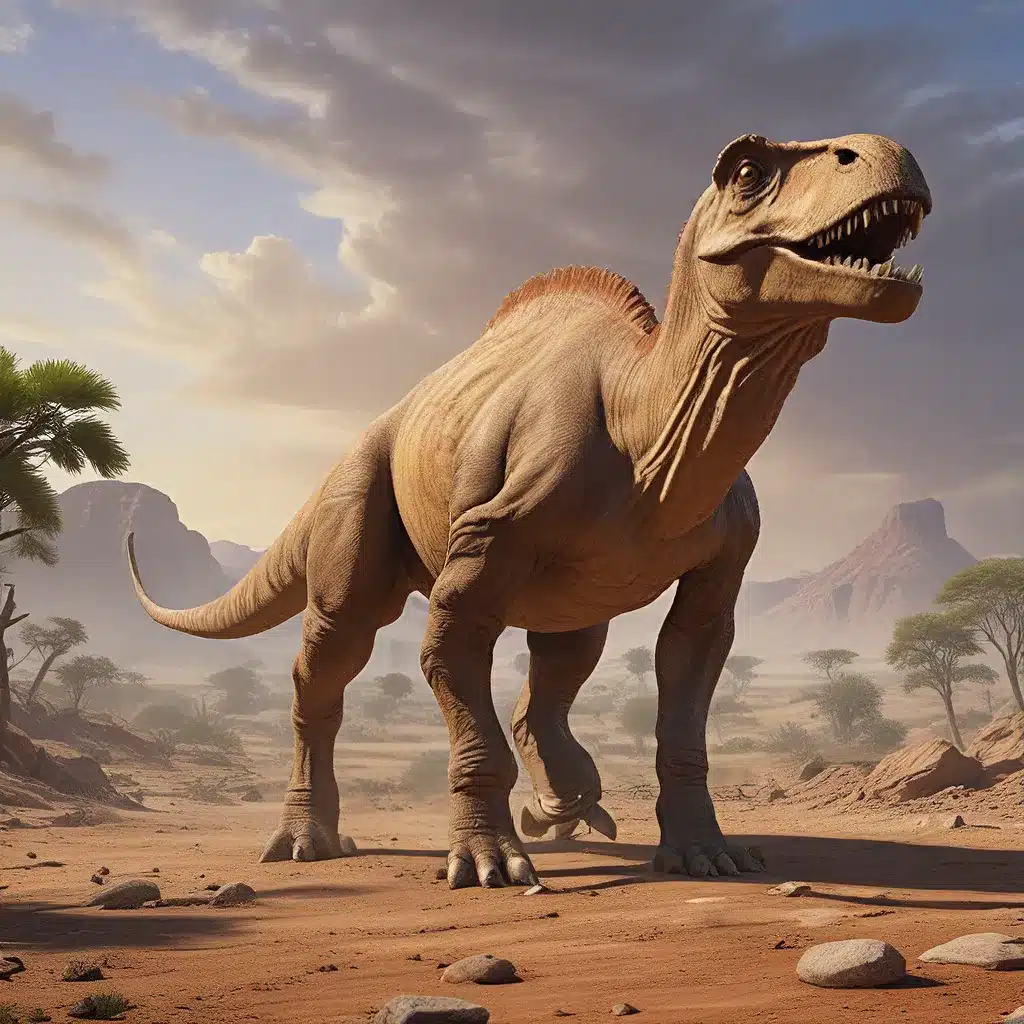
Unveiling the Secrets of the Herbivorous Dinosaur Dynasties
The vast plains and lush forests of the Mesozoic era were once the domain of the mighty hadrosaurs, a diverse group of herbivorous dinosaurs that roamed the Earth millions of years ago. These duck-billed giants, also known as duck-billed dinosaurs, were a dominant force in the prehistoric landscape, shaping the ecosystems they inhabited and leaving behind a rich tapestry of fossils for modern-day paleontologists to unravel.
Paleontology, the study of the history of life on Earth through the examination of fossils, has been instrumental in unveiling the remarkable story of the hadrosaurs. By carefully analyzing the fossilized remains of these creatures, scientists have pieced together a vivid picture of their biology, behavior, and the environments they thrived in.
The Rise and Reign of the Hadrosaurs
The hadrosaurs were a highly successful group of dinosaurs that emerged during the Late Cretaceous period, approximately 100 million years ago. These herbivores, ranging in size from the smaller Orodromeus to the massive Shantungosaurus, were widely distributed across the ancient landmasses, occupying a diverse range of habitats from lush river valleys to arid badlands.
One of the most striking features of the hadrosaurs was their distinctive duck-like bills, which they used to graze on a variety of plant material, from leafy vegetation to tough grasses. Their intricate dental arrangements, with hundreds of tiny teeth, allowed them to efficiently process their plant-based diet, fueling their impressive size and growth.
Paleontological evidence suggests that hadrosaurs often lived in large herds, a strategy that provided both protection from predators and access to abundant food resources. This social behavior, combined with their adaptability to various environments, contributed to the hadrosaurs’ remarkable success and dominance during the Cretaceous period.
Uncovering the Fossil Treasures
The fossilized remains of hadrosaurs have been found in abundance across the globe, with major discoveries in North America, Asia, and Europe. These fossil sites have yielded a wealth of information, allowing paleontologists to reconstruct the lives and evolution of these ancient creatures.
One of the most significant hadrosaur fossil sites is the Dinosaur Provincial Park in Alberta, Canada, where thousands of well-preserved skeletons have been unearthed. The park’s arid badlands have protected these fossils from the ravages of time, offering a remarkable window into the lives of the hadrosaurs that once roamed the region.
Paleontological field work at these sites has not only yielded impressive fossils but has also provided insights into the social behavior and migration patterns of hadrosaurs. By studying the positioning and grouping of the skeletons, paleontologists have deduced that these dinosaurs traveled in large herds, much like their modern-day counterparts, the elephants and bison.
Unraveling the Mysteries of Hadrosaur Behavior
The detailed examination of hadrosaur fossils has also shed light on the complex behaviors and adaptations of these herbivorous giants. One particularly intriguing discovery is the evidence of social communication among hadrosaurs.
Paleontologists have found fossilized hadrosaur nests containing the remains of young hatchlings, suggesting that these dinosaurs practiced parental care and likely communicated with their offspring through various vocalizations and visual cues. The presence of these nesting sites also implies a level of territoriality and social organization within hadrosaur communities.
Furthermore, the analysis of hadrosaur bone structures has revealed insights into their locomotion and adaptations. Some species, such as the Parasaurolophus, were equipped with elaborate cranial crests that may have served as visual displays for communication or as cooling mechanisms to regulate their body temperature.
The Decline and Extinction of the Hadrosaurs
Despite their dominance for millions of years, the hadrosaurs, like many other dinosaur groups, ultimately faced extinction towards the end of the Cretaceous period, around 66 million years ago. The exact causes of their demise remain a subject of ongoing debate among paleontologists, with various hypotheses proposed.
One leading theory suggests that the Cretaceous-Paleogene extinction event, often referred to as the K-T extinction, which was likely triggered by a massive asteroid impact, played a significant role in the downfall of the hadrosaurs and other dinosaur species. This catastrophic event drastically altered the global climate and ecosystem, leading to the collapse of the food chain and the eventual extinction of the mighty hadrosaur empires.
However, the story of the hadrosaurs does not end with their extinction. Their fossilized remains continue to captivate and inspire researchers, providing a tangible link to the distant past and offering invaluable insights into the evolution of life on Earth.
Unraveling the Future of Hadrosaur Studies
As paleontological research continues to advance, new discoveries and technologies are shedding even more light on the hadrosaurs and their place in the grand tapestry of prehistoric life. Advancements in paleontological techniques, such as 3D scanning, CT imaging, and genetic analysis, have allowed scientists to delve deeper into the anatomy, biology, and evolutionary relationships of these remarkable creatures.
The ongoing quest to uncover the secrets of the hadrosaurs has captured the imagination of both scientists and the general public. Field expeditions and public outreach programs have made it possible for more people to witness the unearthing of these ancient giants, fostering a greater appreciation for the wonders of paleontology and the shared history of life on our planet.
As we continue to uncover the remnants of the mighty hadrosaur empires, we are reminded of the enduring power of scientific inquiry and the importance of preserving and studying the fragile links to our distant past. The legacy of the hadrosaurs serves as a testament to the resilience and adaptability of life, and their story remains an integral part of the grand narrative of the Earth’s rich and complex history.


